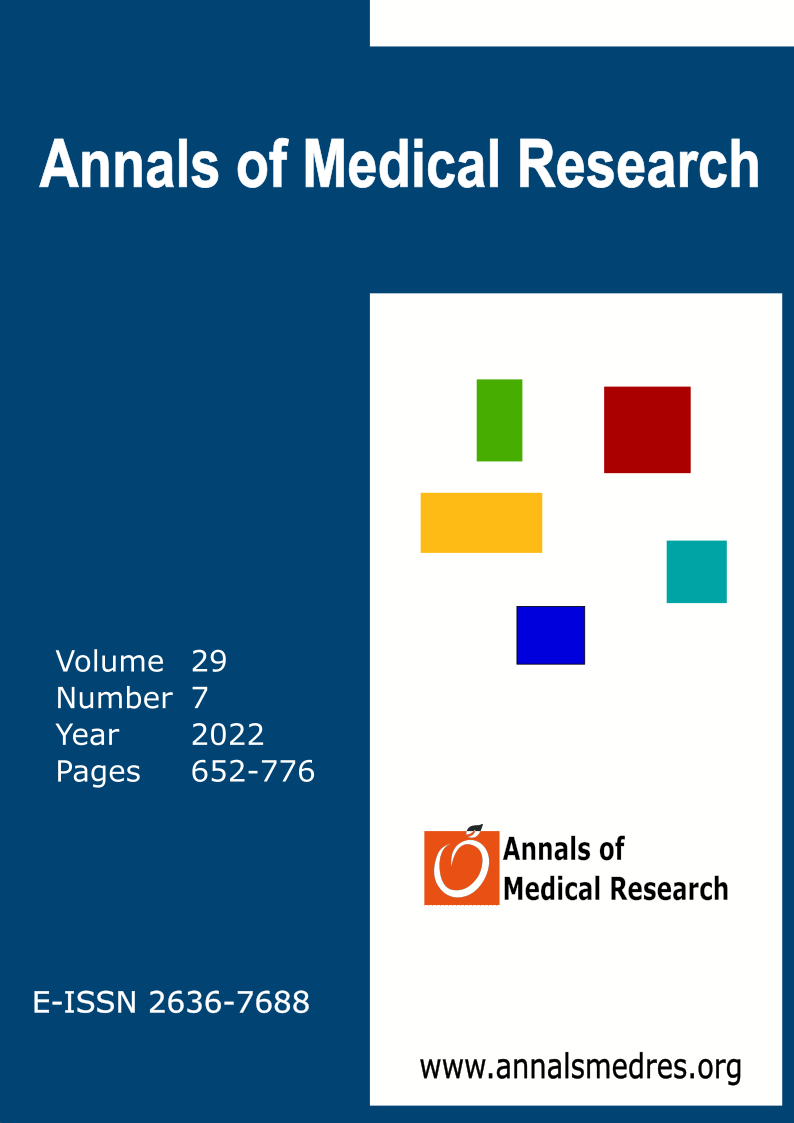Evaluation of CD4/CD8 ratio in treatment follow-up of patients with HIV diagnois in an infection clinic
Keywords:
Antiretroviral therapy, CD4/CD8 ratio, Efficacy of treatment in people living with HIVAbstract
Aim: Antiretroviral therapy (ART) regimens used in the treatment of HIV are assumed to suppress the virus in plasma indefinitely and restore CD4 lymphocyte count. There is increasing evidence that a reversed CD4/CD8 ratio is associated with immune dysfunction, even in patients who have achieved virological suppression with ART and have elevated CD4 lymphocytes. The CD4/CD8 ratio has emerged as a guiding marker as an indicator of immunoactivation in HIV-infected patients. It was aimed to evaluate the CD4/CD8 ratio of HIV-diagnosed patients at baseline and at follow-up after ART regimen.
Materials and Methods: A total of 150 patients were included in the study by retrospectively scanning the CD4/CD8 ratio at the initial and 24th week of follow-up in patients who were diagnosed with HIV and started treatment in the Infectious Diseases and Clinical Microbiology Clinic of the Hospital of the Medical Faculty between 2011-2021. ART treatment regimens were divided into three groups as nucleoside reverse transcriptase inhibitor (NRTI)+protease inhibitor (PI), NRTI+non-nucleoside reverse transcriptase inhibitor (NNRTI) or NRTI+ integrase strand transfer inhibitor (INSTI).
Results: A total of 150 patients were included in the study. While the initial CD4/CD8 ratio of the patients was 0.36, it increased to 0.61 at the 24th week of treatment. Among the 144 patients whose baseline values were CD4/CD8<1, the rate of the ones who achieved CD4/CD8≥1 value at week 24 after ART regimens was found as 13.2% (19/144). It was observed that the CD4/CD8 ratio in the group receiving INSTI was higher (15.1%) than those of the other groups. The undetectable HIV RNA level after treatment was significantly mostly observed in the group, receiving the integrase-based regimen, with 77.1%. With effective ART, CD4/CD8 normalization is higher in individuals with high CD4 T cell counts before treatment. There was a significant increase in the CD4/CD8 ratio in all three ART regimen groups. However, most of the patients who achieved a CD4/CD8 ratio ≥1 were in the INSTI-based ART group.
Conclusion: The CD4/CD8 ratio may contribute to clinical evaluation in long-term follow-up as a marker of immunological response in individuals treated with a diagnosis of HIV.
Downloads
Published
Issue
Section
License
Copyright (c) 2022 The author(s)

This work is licensed under a Creative Commons Attribution-NonCommercial-NoDerivatives 4.0 International License.
CC Attribution-NonCommercial-NoDerivatives 4.0






